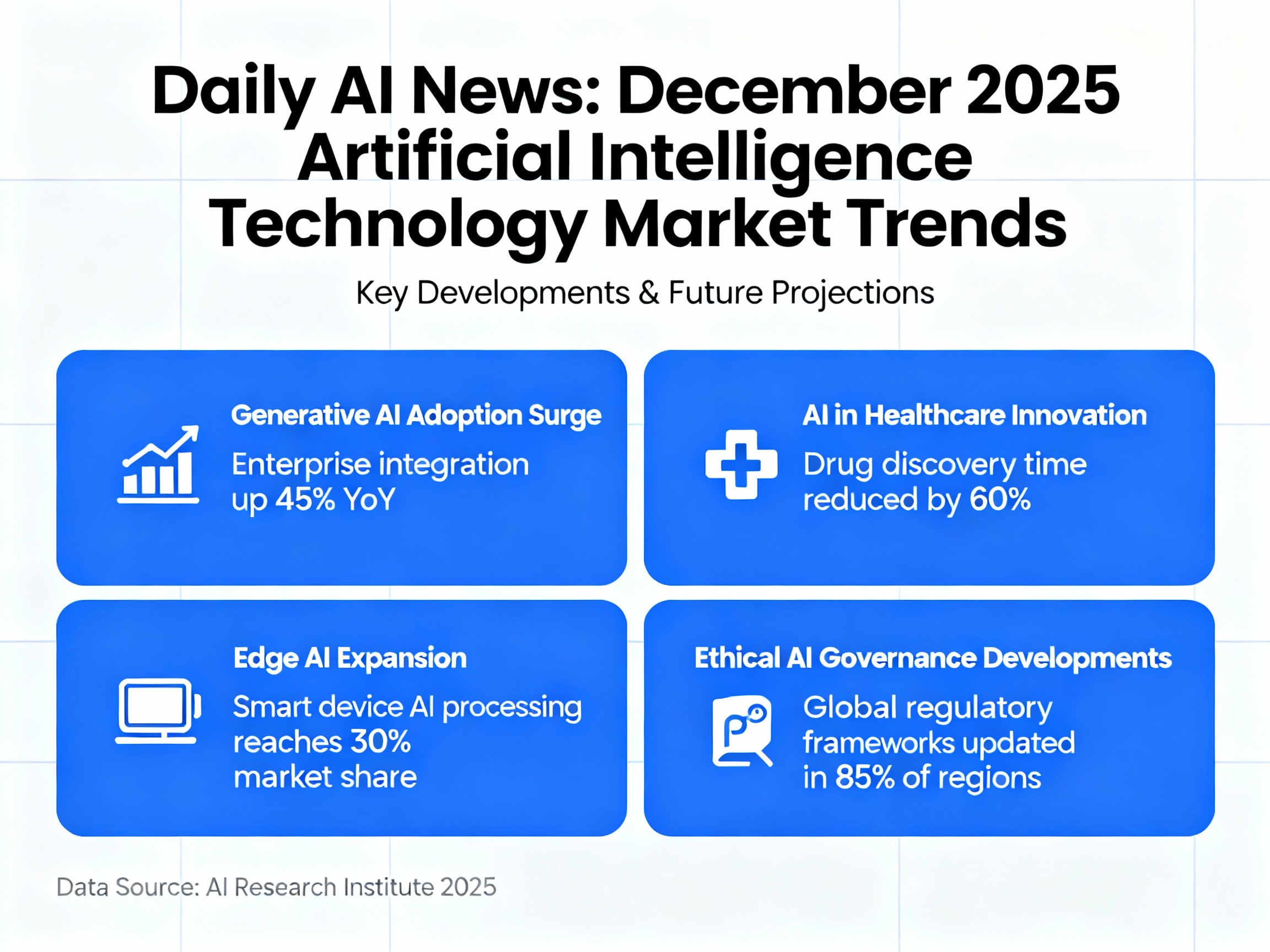Global AI Landscape 2025: China's Rise, Corporate Partnerships, and Regulatory Shifts
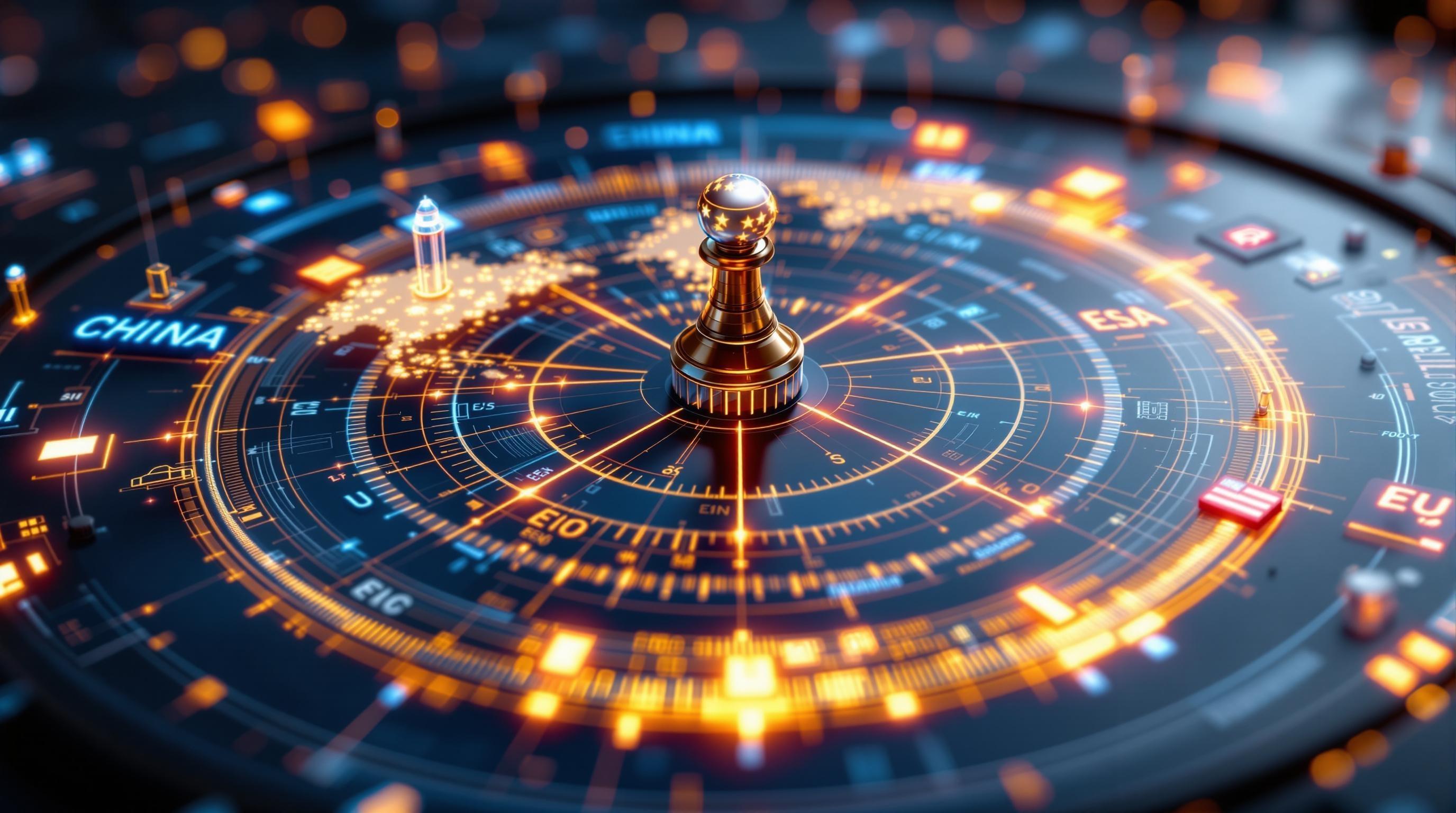
China is rapidly becoming an AI superpower, boasting a prolific output of AI models and strategic global governance proposals that challenge the U.S.'s leadership. To stay competitive, understand China's focus on efficiency and specialized models, like Alibaba's Qwen3-Coder, and consider how these innovations can inspire cost-effective AI solutions within your own organization. Also, keep an eye on China's strategic partnerships with the Global South.
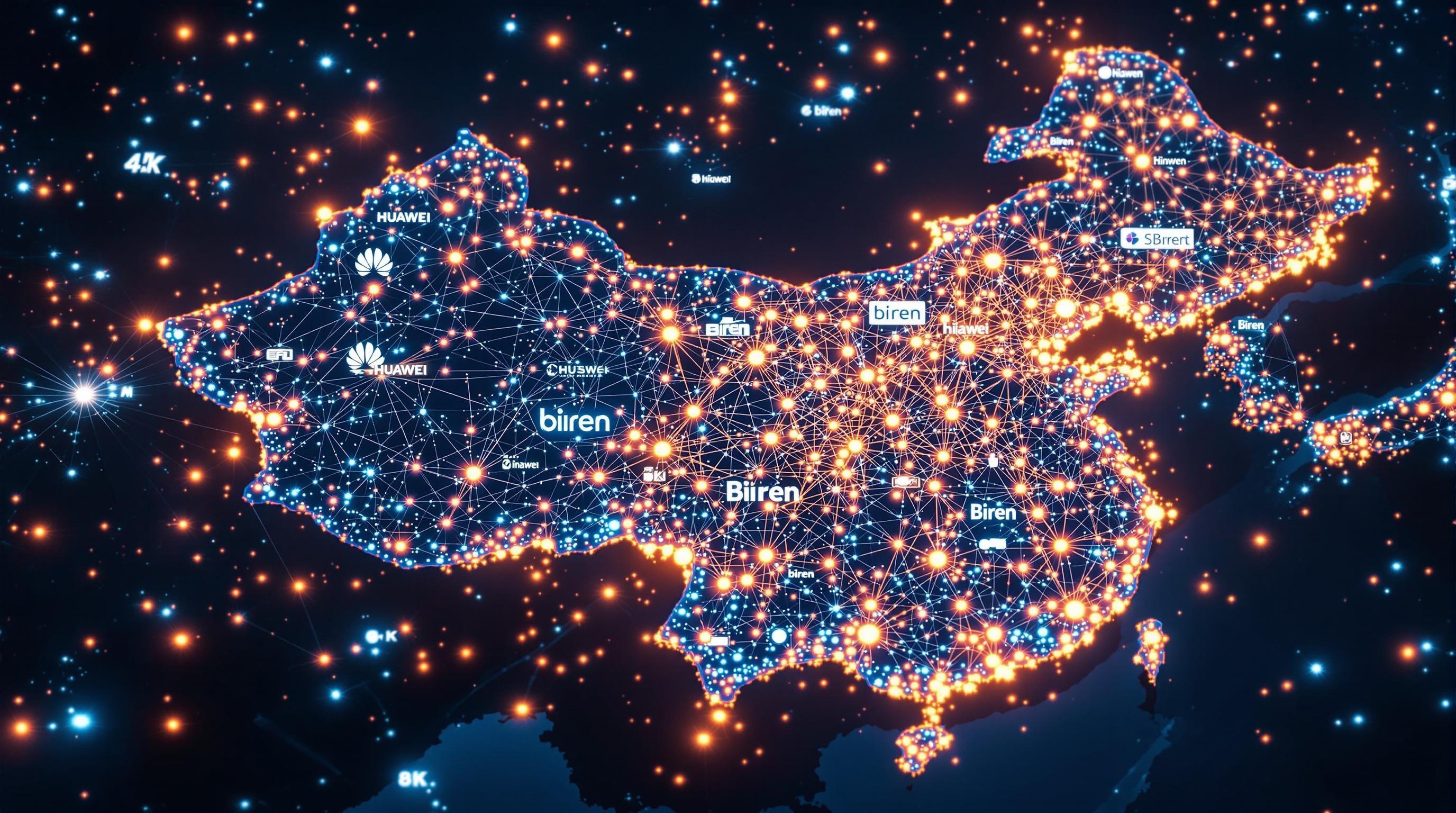
China's AI Revolution: Dominance and Innovation at WAIC 2025
China is rapidly asserting itself as a global AI superpower, a position made strikingly clear by its prolific output of AI models and its strategic investments in the field.
China's AI Model Dominance
China has emerged as a leading force in AI model development, boasting a staggering 1,509 large AI models. This figure highlights the nation's commitment to advancing AI technology and its capacity for innovation.
This sheer volume underscores a national priority: to not just participate in the AI revolution, but to lead it. This commitment translates into significant resources poured into research, development, and deployment of AI technologies across various sectors.
The World Artificial Intelligence Conference (WAIC) 2025
The World Artificial Intelligence Conference (WAIC) 2025, held in Shanghai, served as a powerful testament to China's AI ambitions and achievements. WAIC isn't just another tech conference; it's a showcase of cutting-edge AI innovations, a forum for global collaboration, and a platform for solidifying China's position at the forefront of AI development. The event attracts leading researchers, entrepreneurs, and policymakers from around the globe, fostering discussions and partnerships that shape the future of AI.
AI Enterprises and Unicorns
The scale of China's AI ecosystem is further illustrated by the sheer number of AI enterprises and unicorns it houses. Compared to the rest of the world, China stands out as a hub for AI-focused businesses, attracting significant investment and talent. This thriving ecosystem is fueled by a combination of government support, private sector innovation, and a large, digitally savvy population. It is an ecosystem where companies like Alibaba are pushing boundaries.
Consider these points:
Government Initiatives: China's government has been instrumental in fostering AI growth through strategic policies, funding initiatives, and the creation of AI development zones.
Venture Capital: Chinese AI startups are attracting substantial venture capital, enabling them to scale rapidly and compete on a global stage.
Talent Pool: China boasts a large and growing pool of AI talent, driven by top-tier universities and research institutions.

WAIC 2025: A Hub for Commerce and Innovation
WAIC 2025 wasn't just about showcasing technology; it was also a significant driver of economic activity. The conference facilitated numerous deals and partnerships, generating substantial purchase orders that underscore the commercial viability of Chinese AI solutions. These deals span a wide range of industries, from manufacturing and healthcare to finance and transportation.
Cost Efficiency and Innovation
Chinese AI isn't just about scale; it's also about efficiency and innovation. Companies like Z.ai are developing models like GLM-4.5 that offer comparable performance to leading global models but at a significantly lower cost. This cost-effectiveness is a major competitive advantage, making AI solutions more accessible to businesses of all sizes.
This drive for efficiency is characteristic of the Chinese AI landscape, where companies are constantly seeking ways to optimize performance and reduce costs.
Alibaba's Qwen3-Coder
Alibaba's Qwen3-Coder model exemplifies the innovative spirit of Chinese AI. This model is specifically designed for AI coding solutions, addressing the growing demand for automated software development tools. By leveraging AI to streamline the coding process, Alibaba is helping developers build software faster and more efficiently.
As AI coding assistants become more sophisticated, tools like GitHub Copilot, an AI pair programmer that suggests code and entire functions in real-time, are becoming indispensable for developers. Qwen3-Coder is a further sign of the increasing capabilities and specialization in the AI landscape.
China's rapid advancements in AI, highlighted by its model output, WAIC, and innovative companies, signal a significant shift in the global AI landscape. Its focus on efficiency and specialized models positions it as a major player in shaping the future of AI. This focus will undoubtedly influence how AI is developed, deployed, and regulated worldwide. Next, we'll turn our attention to the evolving landscape of corporate partnerships in the AI sector and examine their impact on innovation and market dynamics.
China's Proposal for Global AI Governance: Challenging U.S. Leadership
Imagine a world where AI's development isn't steered by just a few powerful nations, but by a collective, inclusive effort. That's precisely the vision China is pushing forward.
Premier Li Qiang's Vision: A New Global AI Order
At a recent global summit, Premier Li Qiang articulated China's ambition to reshape the landscape of AI governance. His proposal centered on establishing a new international organization dedicated to AI cooperation. This organization, as envisioned, would serve as a platform for nations worldwide to collaborate on AI-related issues, share best practices, and collectively address the ethical,安全, and societal challenges that AI presents. This isn't just about technological advancement; it's about crafting a shared future where AI benefits all of humanity.
This initiative directly challenges the existing U.S.-led framework, which has traditionally dominated technological standards and policy-making.
Challenging U.S. Leadership in AI Governance
For decades, the United States has been at the forefront of technological innovation and regulation. However, China's rapid advancements in AI, coupled with its assertive diplomatic efforts, pose a significant challenge to this established order. China's proposal for a new global AI organization can be seen as a strategic move to gain greater influence in shaping international AI norms and standards. By positioning itself as a champion of multilateralism and inclusive governance, China is vying for a leadership role in the AI era. One tool being used to further these advancements is TensorFlow, an open-source machine learning framework, that allows researchers and developers to build and deploy AI models.
Collaboration with the Global South
A critical aspect of China's strategy is its emphasis on collaboration with nations in the Global South. These countries, often excluded from the core discussions on AI governance, represent a vast potential for partnership and influence. By offering technological assistance, sharing AI expertise, and advocating for their inclusion in global AI policy-making, China aims to build a coalition of support for its vision of a more equitable and representative AI ecosystem. This approach not only strengthens China's geopolitical standing but also addresses the critical need to ensure that AI benefits are distributed more broadly, and the risks are managed collaboratively.
Geopolitical Competition in Artificial Intelligence
The rivalry between China and the U.S. in AI is not merely a technological race; it's a multifaceted geopolitical competition. It encompasses technological supremacy, economic dominance, and, perhaps most importantly, the power to shape the norms and standards that will govern AI's development and deployment worldwide. This competition is evident in areas ranging from AI chip manufacturing to the development of advanced AI algorithms. Resources like the Hugging Face platform, which fosters collaboration and open-source development in AI, are key battlegrounds in this ongoing contest.
China's AI Governance Framework Proposal
China's approach to AI governance is characterized by a blend of centralized control and decentralized innovation. Its proposed framework emphasizes:
Data Security: Strict regulations on data collection, storage, and usage to protect user privacy and prevent misuse.
Ethical Guidelines: Principles for AI development that prioritize fairness, transparency, and accountability.
National Security: Measures to ensure that AI technologies do not pose a threat to national interests or social stability.
International Cooperation: A commitment to working with other nations to address shared challenges and promote responsible AI development. For example, tools like DeepL, an AI-powered translation tool, showcase how AI can facilitate international communication and collaboration.
This framework, while reflecting China's unique political and social context, offers a contrasting model to the more laissez-faire approach favored by some Western nations. The AI News section of our website provides continuous updates on these evolving global dynamics.
As AI continues to evolve, the push and pull between different governance models will likely intensify. China's active pursuit of global AI leadership marks a pivotal moment, signaling a transition towards a more multipolar AI landscape, where different nations and regions have a greater say in shaping the future of this transformative technology. This sets the stage for complex negotiations and collaborations that will ultimately determine how AI is developed, deployed, and governed on a global scale.

Major Corporate Partnerships: Tesla-Samsung Chip Deal and Meta's AI Talent Acquisition
The year 2025 is proving to be a pivotal one for strategic alliances and talent acquisition in the AI industry, with major players making bold moves to secure their positions. Let's delve into some of the most impactful corporate partnerships and talent acquisitions shaping the AI global landscape.
Tesla and Samsung's $16.5 Billion Chip Partnership
In a landmark deal, Tesla has committed $16.5 billion to partner with Samsung for the production of its cutting-edge AI6 chips. This collaboration marks a significant step for both companies. The AI6 chips are critical for Tesla's advancements in autonomous driving and AI-driven vehicle features.
"This partnership underscores the increasing importance of custom-designed AI chips in the automotive industry," says one leading tech analyst. "Tesla's move to diversify its supply chain demonstrates a forward-thinking approach to mitigating risks and ensuring a steady supply of critical components."
Samsung will manufacture these chips at its Taylor, Texas facility, a move that not only strengthens the economic ties between the two companies but also boosts semiconductor manufacturing within the United States. This facility is equipped with state-of-the-art technology, making it an ideal location for producing the high-performance AI chips Tesla requires. Samsung's expertise in semiconductor manufacturing, combined with Tesla's innovative AI designs, promises to yield powerful and efficient AI solutions for Tesla's vehicles.
Diversifying the Chip Supply Chain
One of the key strategic advantages of this partnership is Tesla's diversification of its chip supply chain. Previously, Tesla relied heavily on TSMC for its chip manufacturing needs. By adding Samsung as a major supplier, Tesla reduces its dependence on a single source, mitigating potential disruptions caused by geopolitical tensions, natural disasters, or other unforeseen events. This diversification strategy provides Tesla with greater control over its production timeline and ensures a more stable supply of crucial AI components. This strategy is particularly vital in the current global climate, where supply chain resilience is paramount. Tools like TensorFlow, an open-source machine learning platform, benefit from reliable chip production that fuels AI development.
Meta's AI Talent Acquisition: The Shengjia Zhao Hire
Meta continues to aggressively expand its AI capabilities, most recently demonstrated by hiring Shengjia Zhao as the chief scientist of its Superintelligence unit. Zhao, a renowned expert in the field, brings a wealth of knowledge and experience to Meta, further solidifying the company's commitment to leading the AI revolution. Meta is investing heavily in AI, including a recently announced massive investment. You can stay up to date on the AI News page.
Meta's strategy extends beyond just talent acquisition; it's about building a comprehensive AI ecosystem.
High Compensation Packages: Meta is known for offering lucrative compensation packages to attract top AI talent. These packages often include high salaries, stock options, and other perks, making Meta a highly desirable employer for AI researchers and engineers.
Strategic Importance: Securing top-tier talent like Zhao is crucial for Meta's long-term AI goals, including developing advanced AI models, enhancing its AI infrastructure, and driving innovation across its various platforms.
AI Search Capabilities: Meta is particularly focused on developing AI-driven search capabilities for its popular platforms, Instagram and Facebook. By leveraging AI, Meta aims to provide users with more relevant and personalized search results, enhancing user engagement and satisfaction. Tools like Hugging Face, an open-source AI platform, could play a crucial role in developing these search capabilities.
Meta's aggressive pursuit of AI talent reflects its ambition to remain at the forefront of technological innovation and deliver cutting-edge experiences to its billions of users.
These strategic moves by Tesla and Meta highlight the intense competition and collaboration that define the current AI landscape. As companies race to develop and deploy advanced AI solutions, partnerships and talent acquisition will continue to play a pivotal role in shaping the future of the industry.
U.S. Policy Shift and EU AI Act Challenges: Regulatory Divergence
The global AI landscape is increasingly defined by differing regulatory approaches, and nowhere is this more evident than in the contrast between the United States and the European Union.
U.S. Policy: Deregulation Under 'America's AI Action Plan'
The Trump administration's 'America's AI Action Plan' represents a significant departure from the regulatory path being forged in Europe. Instead of prescriptive rules, the plan champions deregulation to foster AI innovation and maintain U.S. competitiveness. Think of it as the Wild West of AI development, where companies are largely free to experiment without heavy government oversight. This approach emphasizes a light touch, believing that innovation thrives when unburdened by excessive rules.
Key initiatives under the plan include:
Removing Federal Regulations: The core goal is to eliminate any existing regulations that could hinder AI development and deployment. This involves a systematic review of existing rules to identify those that are considered overly burdensome or outdated.
Expediting Permits: The plan seeks to streamline the process for companies seeking permits or approvals related to AI projects, aiming to reduce bureaucratic delays and accelerate time to market. It's like giving AI projects the fast lane, cutting through red tape to get them off the ground quicker.
Partnering with Industry: The government is actively engaging with industry stakeholders to understand their needs and concerns, fostering a collaborative environment where regulations (or the lack thereof) are aligned with practical realities. This is akin to having a constant dialogue between policymakers and AI developers, ensuring that decisions are informed and relevant.
Notably, the 'America's AI Action Plan' also targets what it perceives as ideological biases in AI systems. There's a specific focus on avoiding Diversity, Equity, and Inclusion (DEI) concepts within AI, which reflects a broader political narrative around the role of such concepts in technology and society. For instance, algorithmic bias detection tools, like Hugging Face, a platform offering a wide range of pre-trained models and tools, might face scrutiny if they are seen as promoting specific ideological viewpoints. The intent is to ensure AI systems are "objective" and free from ideological influence, though defining and achieving true objectivity remains a complex challenge.
EU AI Act: Implementation Challenges
In stark contrast to the U.S. approach, the European Union's AI Act is a comprehensive regulatory framework designed to govern the development and use of AI across the EU. Think of it as a highly structured garden, where every plant (AI application) is carefully monitored and controlled to ensure it grows in a safe and ethical manner. However, this structured approach comes with its own set of challenges.
The implementation of the EU AI Act faces several hurdles:
Incomplete Technical Standards: A significant concern is the lack of fully developed technical standards to guide compliance. Without clear, detailed standards, companies struggle to understand exactly how to meet the Act's requirements. It's like trying to build a house with only a vague blueprint, leading to uncertainty and potential errors.
Compliance Burdens: The Act imposes substantial compliance burdens on companies, particularly smaller businesses and startups. The cost and complexity of adhering to the regulations can be a significant barrier to entry and innovation. Imagine a small bakery trying to navigate the same food safety regulations as a large-scale food manufacturer – the burden can be disproportionately heavy.
Uncertain Interpretations: The broad language used in some sections of the Act leads to uncertainty about how it will be interpreted and enforced in practice. This lack of clarity creates a risk of inconsistent application and legal challenges. It’s like reading a complex legal contract that's open to multiple interpretations, leaving everyone unsure of their rights and obligations.
"The contrast between the US and EU approaches highlights the fundamental tension between fostering innovation and mitigating potential risks associated with AI."
Delay considerations and pressure for regulatory simplification are becoming increasingly prominent. Stakeholders are calling for a more streamlined and pragmatic approach to regulation to avoid stifling AI innovation in Europe. The discussion also involves AI tools, such as ChatGPT, the popular large language model, and how the EU AI act may affect their use and development. As the global AI landscape continues to evolve, the regulatory divergence between the U.S. and the EU will likely have profound implications for the future of AI innovation and deployment, shaping the competitive dynamics and ethical considerations surrounding this transformative technology.
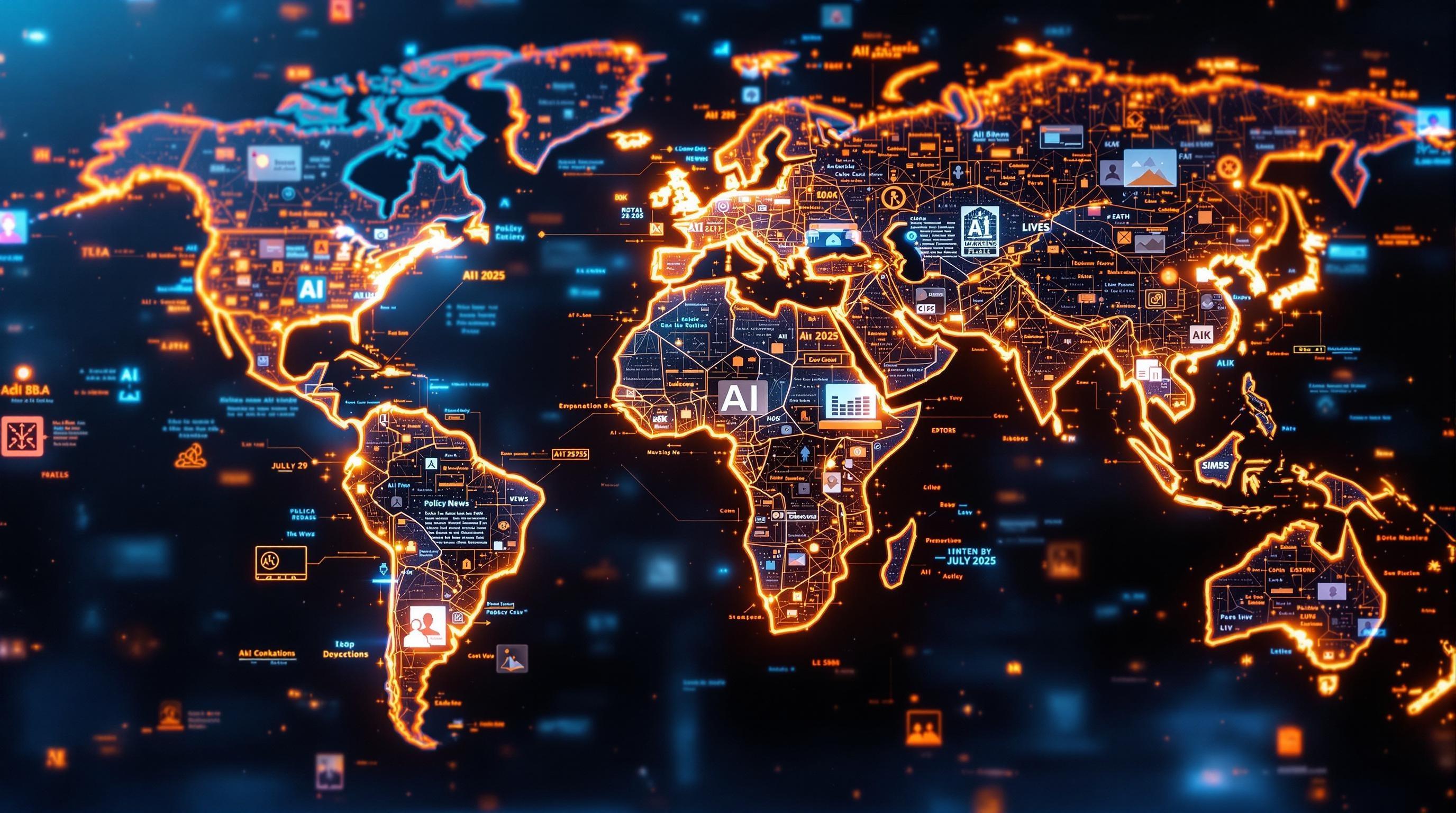
Infrastructure and Investment: Europe's AI Gigafactories and Venture Capital Trends
Europe is making big moves to compete in the global AI race, and it all starts with infrastructure and investment.
Europe's AI Gigafactories: Powering the Future
Europe is planning to build multi-billion-euro AI 'gigafactories' to drastically increase its computing capacity. Think of these gigafactories like giant server farms, specifically designed to handle the immense computational demands of AI models. These facilities are critical for training large language models (LLMs) and running complex AI applications, positioning Europe to be less reliant on other regions for its AI needs.
The first of these gigafactories is set to be located in Munich, Germany. This strategic location highlights Germany's commitment to becoming a major AI hub. The Munich gigafactory will serve as a cornerstone for European AI development, attracting talent, fostering innovation, and driving economic growth in the region.
UBS estimates suggest that these gigafactories will significantly increase Europe's computing capacity, but this also raises concerns about power consumption. Training large AI models is incredibly energy-intensive. To mitigate these concerns, sustainable energy solutions and energy-efficient designs will be crucial for these facilities. As AI continues to advance, finding ways to balance computational power with environmental responsibility will become increasingly important.
Venture Capital Trends in the AI Landscape
Let's switch gears and look at the financial side of AI. Looking at AI venture capital investment trends in Q2 2025, some interesting patterns emerge. While overall investment levels remain high, there's a noticeable shift towards lower-value acquisitions. This suggests that investors are becoming more cautious, focusing on strategic acquisitions rather than high-risk, high-reward ventures.
Despite the cautious approach to acquisitions, the sheer volume of investment in AI is staggering. In the U.S., AI-related investments accounted for a whopping 71% of all venture capital funding during this period. This indicates the overwhelming confidence investors have in the transformative potential of AI. It's like everyone is betting on AI being the next big thing, and they're putting their money where their mouth is.
The rise in AI investments also creates more opportunities for AI startups and researchers. More funding often translates into accelerated research, faster product development, and broader adoption of AI technologies across various industries. For example, companies working on innovative solutions using TensorFlow or PyTorch, two popular machine learning frameworks, may benefit from increased investment in the sector.
Ultimately, the combination of infrastructure investments and venture capital trends paints a complex picture of the AI landscape. While Europe is building the physical foundation for AI with its gigafactories, global investment patterns reveal a mix of enthusiasm and caution. Staying informed on these developments is essential for anyone looking to navigate the rapidly evolving world of AI, you can do so through resources like AI News.
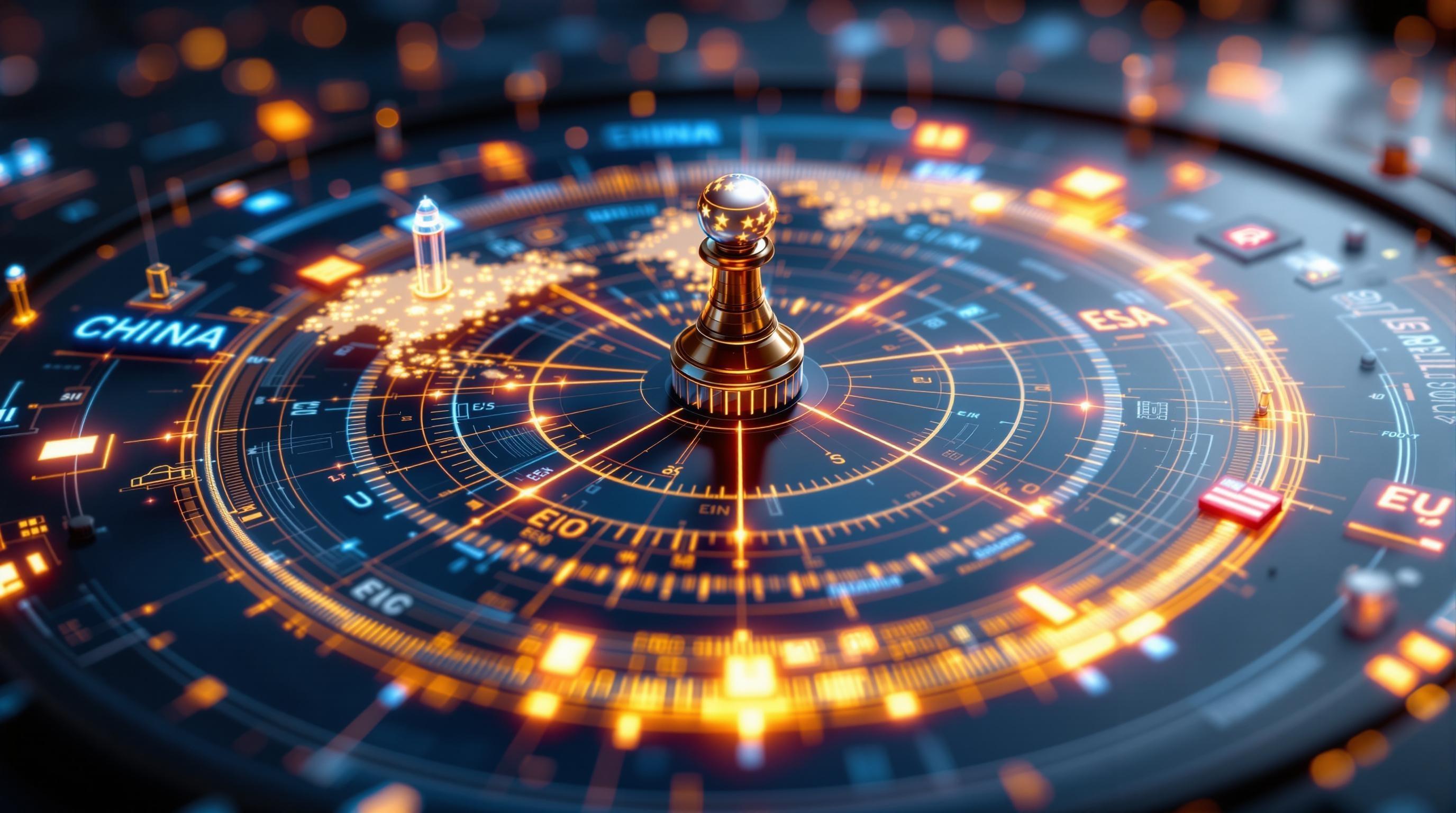
Technological Breakthroughs: Quantum Computing, Robotics, and AI-Powered Devices
The relentless march of technological progress continues, fueled by breakthroughs in quantum computing, robotics, and increasingly sophisticated AI-powered devices.
Quantum Computing's Approaching Reality
It wasn't long ago that quantum computing was seen as a distant dream, decades away from practical application. However, the tune is changing, even at the highest levels. Nvidia CEO Jensen Huang, once skeptical, has acknowledged the growing importance of quantum computing, stating that it is "no longer a science experiment." This shift in perspective underscores the rapid advancements being made in the field, suggesting that quantum computers may soon be capable of tackling problems that are currently intractable for even the most powerful classical supercomputers. Huang's acknowledgment signals a potential future where Nvidia could play a pivotal role in accelerating quantum computing through specialized hardware and software solutions.
Quantum computing promises to revolutionize fields like medicine, materials science, and artificial intelligence, offering unprecedented computational power.
One of the significant hurdles in quantum computing has been quantum error correction. Quantum bits, or qubits, are notoriously fragile and prone to errors due to environmental noise. However, Google recently unveiled AlphaQubit, an AI system designed to tackle these challenges. AlphaQubit is designed to find better ways to control the hardware of quantum computers, which reduces the amount of error. This is a big step forward in making quantum computers more reliable and useful.
The Rise of Intelligent Robotics
The robotics industry is experiencing a surge in growth, driven by advances in AI and machine learning. Robots are no longer confined to simple repetitive tasks; they are becoming increasingly intelligent, adaptable, and capable of performing complex operations in diverse environments. This AI integration is unlocking new possibilities across various sectors, from manufacturing and logistics to healthcare and exploration.
Several key areas are witnessing particularly rapid advancements:
Humanoid Robots: Companies are investing heavily in the development of humanoid robots that can work alongside humans in a variety of settings. These robots are designed to mimic human movements and behaviors, making them well-suited for tasks that require dexterity, flexibility, and adaptability. They can assist in manufacturing, perform dangerous jobs, or help in customer service.
AI-Powered Surgical Robotics: Surgical robots are becoming increasingly sophisticated, equipped with advanced AI algorithms that enhance precision, minimize invasiveness, and improve patient outcomes. These robots can assist surgeons in performing complex procedures with greater accuracy and control, leading to faster recovery times and reduced complications.
Warehouse Automation: The logistics industry is rapidly adopting robotic solutions to automate warehouse operations, improve efficiency, and reduce costs. Robots are being used for a variety of tasks, including picking, packing, sorting, and transporting goods. These automated systems can operate 24/7, significantly increasing throughput and reducing the need for manual labor.
AI-Powered Devices: A Glimpse into the Future
AI is not just transforming industries; it's also making its way into our everyday devices, enhancing their capabilities and making them more intuitive and user-friendly. From smartphones and wearables to home appliances and automobiles, AI is poised to revolutionize the way we interact with technology.
The integration of AI into everyday devices promises to create a more seamless, personalized, and efficient user experience.
Consider the recent launch of OPPO's Reno14 Series, which showcases the increasing sophistication of AI in mobile devices. These smartphones boast advanced AI imaging capabilities, allowing users to capture stunning photos and videos with minimal effort. The Reno14 series also integrates AndesGPT, a large language model developed by OPPO, enabling a range of intelligent features, such as natural language processing, intelligent image editing, and personalized recommendations. This integration exemplifies the trend of embedding powerful AI models directly into consumer devices, making AI more accessible and integrated into our daily lives.
The convergence of quantum computing, robotics, and AI-powered devices represents a pivotal moment in technological history. As these fields continue to advance at an accelerating pace, we can expect to see even more transformative innovations that reshape our world in profound ways. Keeping up with AI News will be critical to understanding this changing landscape. These technological advancements promise a future where AI is not just a tool, but an integral part of our lives, enhancing our capabilities and solving some of the world's most pressing challenges.
Enterprise AI Adoption and Regional Initiatives: Microsoft, AWS, Pittsburgh, and Palantir
The AI revolution is no longer a distant promise; it's rapidly transforming how enterprises operate, innovate, and compete. As we move further into 2025, the adoption of AI solutions is accelerating, with major players like Microsoft and AWS leading the charge. Simultaneously, regional initiatives and strategic government partnerships are reshaping the AI landscape.
Microsoft's AI-Powered Ecosystem
Microsoft continues to aggressively integrate AI into its core products, most notably with Microsoft Copilot. The integration of Copilot Vision directly into Windows 11 exemplifies this strategy, enabling users to extract text from images, solve math problems, and even identify dog breeds with ease. This seamless integration brings AI's capabilities directly to the user's fingertips, making it an indispensable tool for everyday tasks.
But Microsoft's ambition doesn't stop there. The company is also developing advanced reasoning agents for M365 Copilot users. These agents promise to enhance productivity by automating complex workflows and providing intelligent assistance. Imagine an agent that can automatically summarize lengthy email threads, schedule meetings based on participant availability, and even draft initial responses – all with minimal user input. Such capabilities could revolutionize how businesses operate, freeing up employees to focus on more strategic and creative tasks.
AWS and the Democratization of AI
Amazon Web Services (AWS) is solidifying its position as a leading AI platform provider by expanding its AI offerings and simplifying access to AI tools. AWS's AI Platform is undergoing significant expansion with the introduction of an AI Agents Marketplace and Kiro IDE. The AI Agents Marketplace will allow developers to discover, deploy, and manage pre-built AI agents for various use cases, lowering the barrier to entry for businesses looking to integrate AI into their operations. Think of it as an app store, but for AI, making it easier than ever to find the perfect solution for your specific needs.
Kiro IDE, an integrated development environment, is designed to streamline the development and deployment of AI applications on AWS. This tool simplifies the often-complex process of building, training, and deploying AI models, enabling developers to focus on innovation rather than infrastructure management. By offering a comprehensive suite of AI tools and services, AWS is empowering businesses of all sizes to leverage the power of AI.
Pittsburgh's Bold Vision for 'Physical AI'
Pittsburgh is emerging as a hotbed for AI innovation, driven by its unique focus on 'physical AI'. This ambitious initiative aims to combine AI with robotics and advanced manufacturing to create intelligent systems that can interact with and manipulate the physical world. The city's rich ecosystem of research institutions, startups, and established companies is fostering a collaborative environment where these cutting-edge technologies can thrive.
Pittsburgh's focus on 'physical AI' represents a significant shift towards practical, real-world applications of AI.
Imagine robots that can autonomously assemble products, inspect infrastructure, or even perform delicate surgical procedures. These are just a few examples of the potential applications of physical AI, and Pittsburgh is determined to lead the way in this exciting new field.
Palantir's Strategic Plays in the Government Sector
Palantir ontinues to solidify its position as a key player in the AI-powered government sector. Known for its data analytics and AI platforms, Palantir is strategically positioning itself to capitalize on the growing demand for AI solutions in defense, intelligence, and law enforcement. The company's expertise in handling large, complex datasets and its ability to develop customized AI solutions have made it a trusted partner for government agencies worldwide.
Palantir's success is further fueled by its ability to secure lucrative government contracts. These contracts provide a steady stream of revenue and allow the company to further refine and improve its AI capabilities. As governments increasingly rely on AI to address critical challenges, Palantir is poised to play an increasingly important role in shaping the future of national security and public safety.
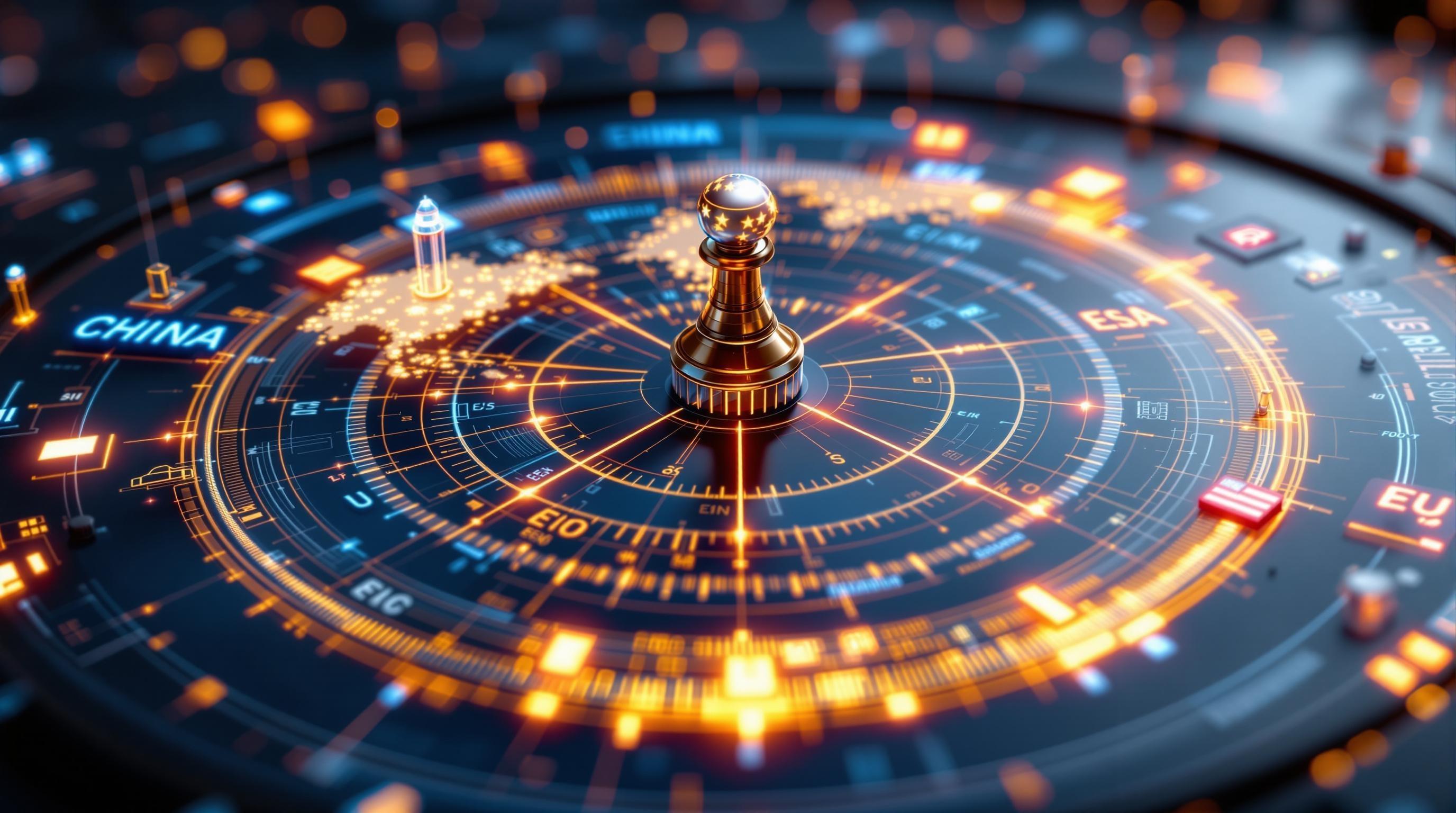
The Shift Towards Practical AI and Revenue
One of the most significant trends in the current AI landscape is the shifting investment patterns towards practical AI applications and clear revenue paths. While earlier stages of AI development were characterized by speculative investments in long-term research projects, investors are now demanding to see tangible results and a clear return on investment. This shift is driving companies to focus on developing AI solutions that can solve real-world problems and generate revenue in the short term.
This focus on practicality is not only driving investment decisions but also shaping the types of AI solutions that are being developed. Companies are prioritizing AI applications that can automate tasks, improve efficiency, enhance decision-making, and create new revenue streams. As AI continues to mature, we can expect to see even greater emphasis on practical applications and measurable results.
In conclusion, the enterprise AI landscape in 2025 is marked by accelerated adoption, strategic partnerships, and a growing focus on practical applications. Companies like Microsoft and AWS are driving innovation with their AI-powered ecosystems, while regional initiatives like Pittsburgh's 'physical AI' are pushing the boundaries of what's possible. As investment patterns shift towards revenue-generating AI solutions, the future of AI in the enterprise looks brighter than ever. This sets the stage for a deeper exploration of AI's impact on specific industries, which we'll delve into next.
Geopolitical AI Competition and the Future of AI: Key Trends and Challenges
Imagine a high-stakes chess game where the pieces aren't just pawns and rooks, but also data centers, AI models, and international regulations. That's essentially the geopolitical landscape of AI in 2025, a complex arena where nations are vying for dominance.
The U.S. vs. China: Two Paths to AI Supremacy
The United States and China are currently the leading players, but they're pursuing very different strategies. The U.S. model is largely driven by private sector innovation, with tech giants like Google (and their Google Gemini model) and Meta leading the charge. Think of it as a decentralized, entrepreneurial ecosystem where breakthroughs often emerge from Silicon Valley garages (or, more likely, well-funded AI labs).
China, on the other hand, is taking a more centralized, state-directed approach. The government is heavily investing in AI research and development, setting ambitious goals, and fostering a national ecosystem. This top-down approach allows for rapid deployment of AI in areas deemed strategic, such as surveillance technology and advanced manufacturing. A key example of Chinese innovation is Kimi, also known as K2, from Moonshot AI, an open-source LLM challenging industry leaders. It's like a national orchestra, with the government acting as conductor, ensuring everyone plays in harmony towards a common goal.
Regulatory Competition: The AI Act vs. U.S. Deregulation
The regulatory landscape further complicates the geopolitical AI competition. The European Union is leading the way with the AI Act, a comprehensive framework designed to mitigate the risks associated with AI. This act aims to create a safe and trustworthy AI ecosystem by setting strict rules for high-risk applications.
In contrast, the U.S. approach is more hands-off, emphasizing deregulation to foster innovation. The idea is to let the market decide which AI technologies succeed, with minimal government intervention. However, this approach also raises concerns about potential risks, such as bias, privacy violations, and the misuse of AI. It's a debate between safety and speed, control and creativity.
The Rise of Multipolar Innovation
While the U.S. and China dominate the headlines, it's crucial to recognize the emergence of a multipolar innovation landscape. Europe, despite its regulatory caution, boasts significant strengths in areas like robotics, AI ethics, and industry-specific AI applications. Other countries, like Israel, Canada, and the UK, are also developing niche expertise and contributing to the global AI ecosystem. This distributed model of innovation suggests that the future of AI will not be determined by a single nation, but by the collective efforts of many.
Here's a simple breakdown of the key strengths:
Region | Strengths |
|---|---|
U.S. | Private sector innovation, entrepreneurial spirit, cutting-edge research |
China | Government investment, rapid deployment, large datasets |
Europe | AI ethics, robotics, industry-specific applications, strong regulatory framework |

The Compliance Challenge
The divergence in AI regulations across different jurisdictions presents a significant challenge for companies operating globally. Navigating the EU's strict AI Act while simultaneously adhering to the U.S.'s more laissez-faire approach requires careful planning and compliance efforts.
This regulatory fragmentation could create barriers to entry, stifle innovation, and even lead to the Balkanization of the AI landscape.
Investment Surge and the Talent Wars
All this competition is fueled by massive investments in AI infrastructure. Nations are pouring billions into building state-of-the-art data centers, supercomputers, and AI research labs. This investment boom is creating a virtuous cycle, attracting top talent, and accelerating the pace of innovation. However, it's also intensifying the global talent war, with countries and companies fiercely competing for the best AI researchers, engineers, and data scientists.
We're seeing a palpable shift from theoretical research to real-world applications. The focus is now on deploying AI in various industries, from healthcare and finance to manufacturing and transportation. This transition requires a different skill set, emphasizing practical experience and domain expertise. The race is on to not only develop cutting-edge AI models but also to integrate them seamlessly into existing systems and workflows.
In conclusion, the geopolitical AI competition is a multifaceted phenomenon shaped by divergent national strategies, regulatory conflicts, massive investments, and a fierce talent war. Understanding these key trends and challenges is essential for navigating the complex and rapidly evolving landscape of AI in 2025. Next, we'll examine the impact of AI on business, delving into corporate partnerships and the strategies that companies are using to gain a competitive edge.
🎧 Listen to the Podcast
Hear us discuss this topic in more detail on our latest podcast episode: https://creators.spotify.com/pod/profile/bestaitools/episodes/China-Tops-Global-AI-Model-Count-Key-Moves-in-China--Meta--Tesla-Shake-Up-AI-Landscape-e365tmn
Keywords: AI, artificial intelligence, AI trends 2025, China AI, AI governance, AI regulation, AI investment, AI chips, Tesla AI, Meta AI, Quantum computing, AI applications, Global AI landscape, AI superintelligence, AI action plan
Hashtags: #AI #ArtificialIntelligence #TechNews #Innovation #GlobalAI
For more AI insights and tool reviews, visit our website https://best-ai-tools.org, and follow us on our social media channels!
Website: https://best-ai-tools.org
X (Twitter): https://x.com/bitautor36935
Instagram: https://www.instagram.com/bestaitoolsorg
Telegram: https://t.me/BestAIToolsCommunity
Medium: https://medium.com/@bitautor.de
Spotify: https://creators.spotify.com/pod/profile/bestaitools
Facebook: https://www.facebook.com/profile.php?id=61577063078524
YouTube: https://www.youtube.com/@BitAutor
Recommended AI tools
Databricks
Data Analytics
Bring AI to your data. Bring AI to the world.
Snowflake (AI Data Cloud)
Data Analytics
Your Data. Your AI. One Cloud.
Fusion Brain
Image Generation
Empowering AI for Everyone
Rize
Writing & Translation
Empowering content creators with AI
Secoda
Data Analytics
The AI-powered data co-pilot for analytics, discovery, and governance
XenonStack
Data Analytics
Empowering Autonomous Intelligence for Trusted and Agile Operations


